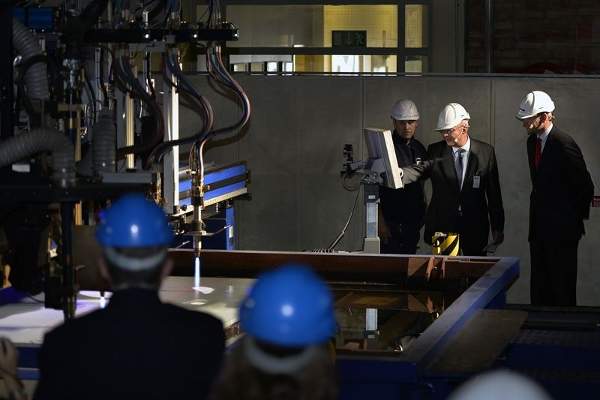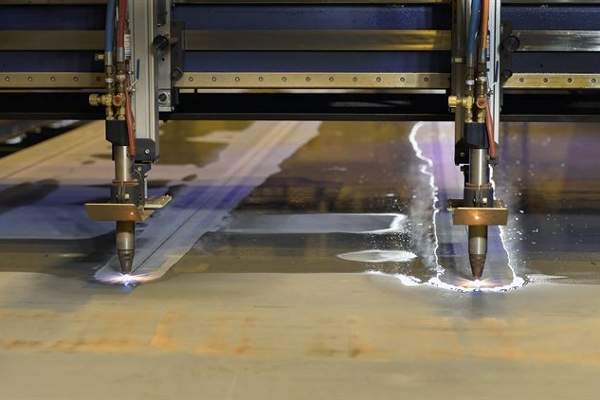Type A26 submarines being built by Saab will serve Swedish Defence as successors to Gotland-class submarines. Type A26’s mission capabilities include maritime security, covert mine countermeasure, intelligence gathering, surveillance, reconnaissance, covert in hostile areas, anti-submarine warfare, anti-surface warfare, mine-laying, underwater work and other special operations.
Saab has been contracted by the Swedish Defence Material Administration (FMV) to construct, verify and deliver two Type A26 next-generation submarines for the Swedish Navy. It received an order from the FMV to procure sensor systems for the Type A26 in December 2014.
The FMV further awarded a contract worth Skr7.6bn ($925m) to Saab for the construction, verification and delivery of two A26 submarines in June 2015.
The first submarine’s first steel was cut at Saab’s Kockums shipyard in September 2015. Deliveries will begin in 2022 and continue through to 2024.
A26 submarine design and features
The Kockums A26 submarine’s modular hull structure, made from special steels, offers high-seakeeping performance and operational effectiveness. The X-rudder configuration with four independently controlled control surfaces provides high manoeuvrability. The submarine requires low operating and maintenance costs.
The submarine is 62m-long, has a draught of 6m and a displacement of approximately 1,800t when surfaced. The Scandinavian design offers spacious and comfortable seating for up to 26 personnel. Two crew members are assigned to the same bunk in rotation based on the hot bunk principle.
The submarine has two pressure-tight compartments and a pressure-tight, mid-tank section. An escape tower on top of the mid-tank section facilitates emergency escape for crewmen.
All applicable management and control systems of the submarine are interconnected through the vessel’s general management services system (GMSS). All subsystems are operated from common multifunctional consoles (MFCs), while all major ship systems are controlled through the ship control and monitoring system (SCMS).
The submarine can be upgraded with the installation of a hull section in the forward or aft compartment. The forward section can be equipped with additional space for workstations, accommodation and other equipment. An additional diesel and/or Stirling AIP engine can be placed in the aft section.
Equipment carried on A26 submarine
A large, flexible payload stowage compartment allows the carriage of a variety of mission payloads to deliver a high degree of operational flexibility. The pressure-tight containers, unmanned underwater vehicles (UUVs), remotely operated vehicles (ROVs) and reconnaissance and rescue systems can be carried externally.
The submarine employs a 6m-long Multimission Portal™ for the launch and recovery of up to eight divers along with their mission payloads. The UUVs can be deployed in mine searching and clearance operations while the unmanned maritime vehicles are used to gather acoustic, visual, electronic and communication intelligence data.
Navigation and communications
The Type A26 submarine is equipped with mast-mounted optronic sensor systems, as well as active and passive sonar systems for the identification and detection of threats.
Advanced network-centric communication capabilities enable the submarine to integrate them with other forces on the land, sea and in the air. External communication is provided through radio, hydroacoustic and shore-connected methods.
Weapons suite
The weapon system is managed from a Saab combat management system (CMS) that is connected with the GMSS.
Countermeasures and safety features
The GHOST® Genuine Holistic Stealth technology makes the Type A26 invisible and quiet. The submarine has low hydrodynamic and infrared signatures as well as low radar cross-section.
The submarine is resistant to significant shock loads from underwater explosions. It is fitted with mine countermeasures to detect, identify and destruct mines. An emergency, high-pressure, air-blowing system is fitted to help bring the submarine to surface in the event of flooding. The submarine is also equipped with a fire-protection system designed according to Safety of Life at Sea (SOLAS) requirements.
Propulsion and performance of A26 submarines
The main propulsion system of the Type A26 submarine is fully-integrated Kockums Stirling air-independent propulsion (AIP) system, which burns gasified pure industrial liquid oxygen (LOX) and diesel fuel. The submarine is also equipped with a conventional diesel-electric propulsion system.
The maximum submerged AIP speed of the submarine is more than 6k, maximum continuous snorting speed is 12k, diving depth is more than 200m, mission endurance is 45 days and operating seawater density is between 1,003kg/m³ and 1,032kg/m³. The submarine can withstand temperatures ranging from -2°C to 32°C.










